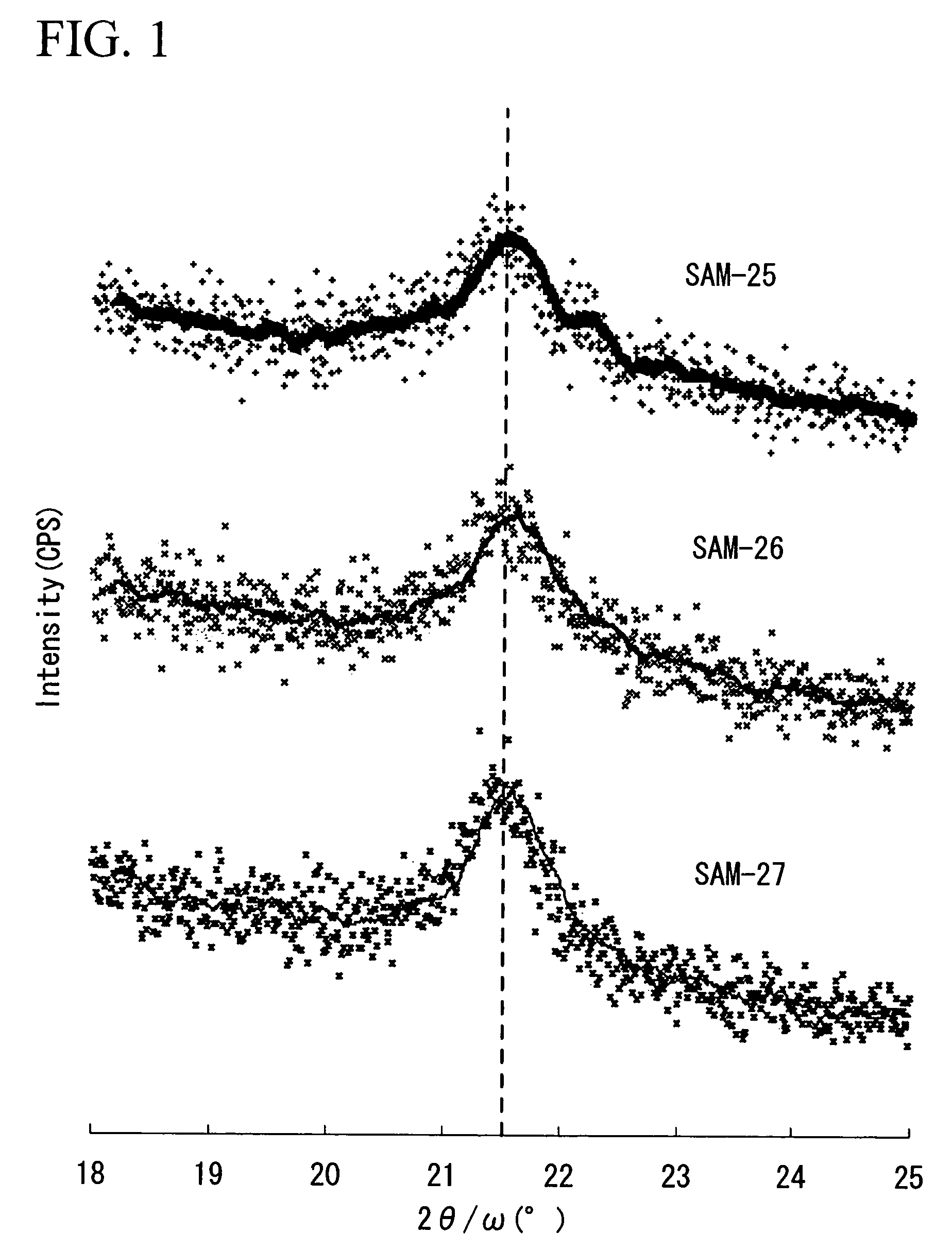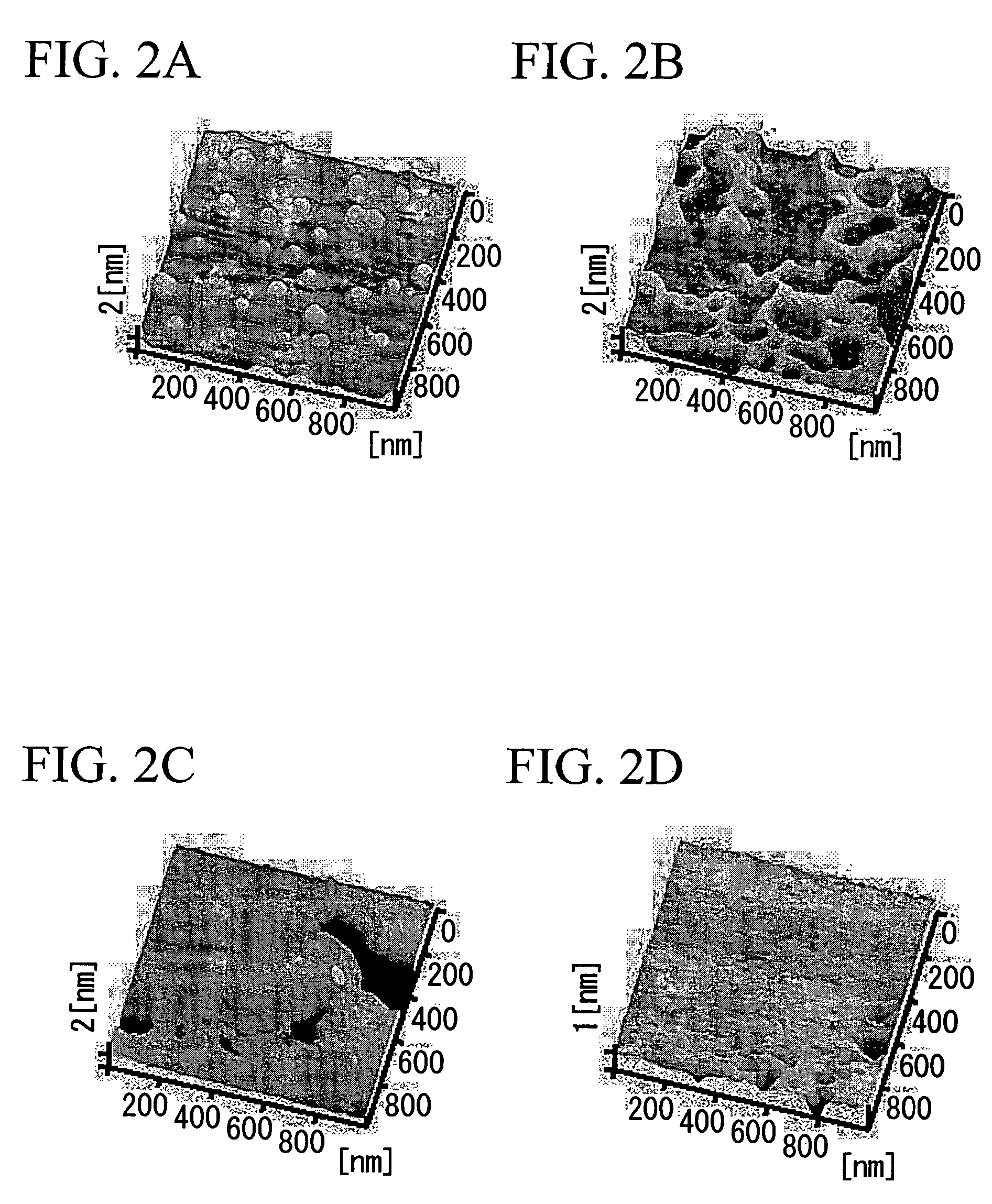Method for producing organic thin film
a thin film, organic technology, applied in the direction of superimposed coating process, liquid/solution decomposition chemical coating, manufacturing tools, etc., can solve the problems of limiting the type of substrate that can be used, and no examples are known of the formation of a crystalline chemically adsorption film on the surface of an amorphous substrate surface, and achieves minimal impurities and rapid film formation
- Summary
- Abstract
- Description
- Claims
- Application Information
AI Technical Summary
Benefits of technology
Problems solved by technology
Method used
Image
Examples
example 1
(1) Catalyst Preparation-1
[0504]12.4 g of titanium tetraisopropoxide (A-1, purity: 99%, titanium oxide-equivalent concentration: 28.2% by weight, manufactured by Nippon Soda Co., Ltd.) was dissolved in 45.0 g of toluene in a four neck flask, and following replacement of the air inside the flask with nitrogen gas, the temperature was cooled to −80° C. in an ethanol / liquid nitrogen bath. In a separate vessel, 1.26 g of ion exchange water (H2O / Ti=1.6 (molar ratio)) was mixed with 11.3 g of isopropanol, cooled to a temperature of −80 to −70° C., and then added dropwise to the above four neck flask with constant stirring. During the dropwise addition, the liquid temperature inside the flask was maintained at −80 to −70° C. Following completion of the dropwise addition, the resulting mixture was stirred for 30 minutes under continued cooling, and the temperature was then raised to room temperature with constant stirring, yielding a colorless and transparent partially hydrolyzed solution (...
PUM
| Property | Measurement | Unit |
|---|---|---|
| RH | aaaaa | aaaaa |
| RH | aaaaa | aaaaa |
| temperature | aaaaa | aaaaa |
Abstract
Description
Claims
Application Information
 Login to View More
Login to View More - R&D
- Intellectual Property
- Life Sciences
- Materials
- Tech Scout
- Unparalleled Data Quality
- Higher Quality Content
- 60% Fewer Hallucinations
Browse by: Latest US Patents, China's latest patents, Technical Efficacy Thesaurus, Application Domain, Technology Topic, Popular Technical Reports.
© 2025 PatSnap. All rights reserved.Legal|Privacy policy|Modern Slavery Act Transparency Statement|Sitemap|About US| Contact US: help@patsnap.com



